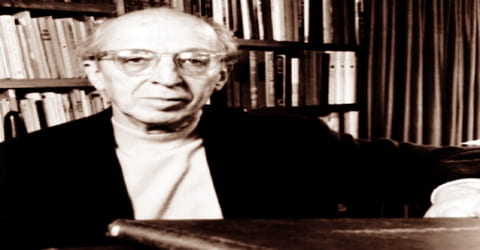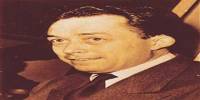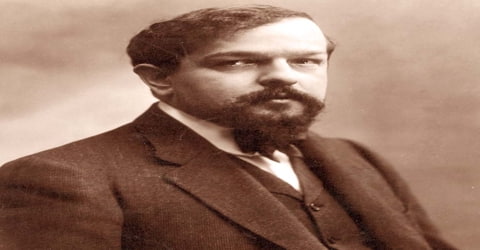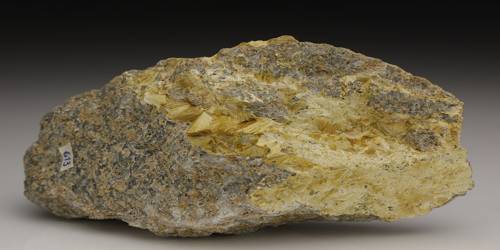Biography of Julius Axelrod
Julius Axelrod – American biochemist.
Name: Julius Axelrod
Date of Birth: May 30, 1912
Place of Birth: New York City, New York, United States
Date of Death: December 29, 2004 (aged 92)
Place of Death: Bethesda, Maryland, United States
Occupation: Biochemists
Father: Isadore Axelrod
Mother: Molly (née Leichtling)
Spouse/Ex: Sally Taub (m. 1938; died 1992)
Children: Paul And Alfred
Early Life

An American biochemist and pharmacologist who, along with the British biophysicist Sir Bernard Katz and the Swedish physiologist Ulf von Euler, was awarded the Nobel Prize for Physiology or Medicine in 1970, Julius Axelrod was born on May 30, 1912, in New York City, New York, U.S. the son of Jewish immigrants from Poland, Molly (née Leichtling) and Isadore Axelrod, a basket weaver. The Nobel Committee honored him for his work on the release and reuptake of catecholamine neurotransmitters, a class of chemicals in the brain that include epinephrine, norepinephrine, and, as was later discovered, dopamine. Axelrod also made major contributions to the understanding of the pineal gland and how it is regulated during the sleep-wake cycle.
Axelrod’s contribution was his identification of an enzyme that degrades chemical neurotransmitters within the nervous system after they are no longer needed to transmit nerve impulses. He also made notable contributions to the understanding of the pineal gland.
Born in New York City to Jewish immigrants from Poland, Axelrod became interested in science, especially medicine, at a young age. He received a bachelor’s degree in biology from the College of the City of New York. He wanted to become a doctor but was rejected by every medical school to which he applied. He began his career working as a chemist before joining the research division of Goldwater Memorial Hospital where he worked under the prominent biochemist Bernard Beryl Brodie who was a major figure in the field of drug metabolism. Under his mentorship, Axelrod ventured into a career in research and performed vital studies on analgesic medications. Eventually, he joined the National Institute of Mental Health where he spent the rest of his career. The key research of his career was regarding the release, reuptake, and storage of the neurotransmitters epinephrine and norepinephrine which made him a joint winner of the Nobel Prize in Physiology or Medicine in 1970 along with Bernard Katz and Ulf von Euler.
Childhood, Family and Educational Life
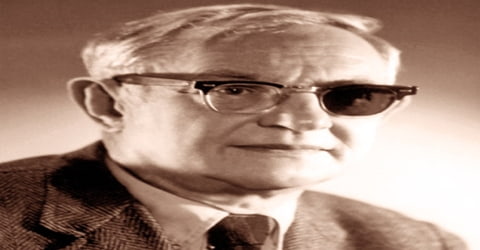
Julius Axelrod, an American biochemist was born in New York City, New York, U.S. on May 30, 1912. His parents, Molly and Isadore Axelrod, were Jewish immigrants from Poland. His father was a basket weaver.
Axelrod was interested in science from a young age and received a bachelor’s degree in biology from the College of the City of New York in 1933. He aspired to be a physician but was rejected by every medical school he applied to.
Axelrod worked briefly as a laboratory technician at New York University, then in 1935, he got a job with the New York City Department of Health and Mental Hygiene testing vitamin supplements added to food. While working at the Department of Health, he attended night school and received his master’s in sciences degree from New York University in 1941.
Personal Life
Julius Axelrod married Sally Taub in 1938. They had two children; Paul and Alfred. His wife died in 1992 after 53 years of marriage.
Axelrod injured his left eye when an ammonia bottle in the lab exploded; he would wear an eyepatch for the rest of his life. Although he became an atheist early in life and resented the strict upbringing of his parents’ religion, he identified with Jewish culture and joined several international fights against anti-Semitism.
Career and Works

Julius Axelrod worked as a chemist in the Laboratory of Industrial Hygiene at New York City’s Health Department (1935-46) and then joined the research division of Goldwater Memorial Hospital (1946), where his studies on analgesic medications helped identify acetaminophen as the chemical responsible for relieving pain. Marketed under such trade names as Tylenol and Panadol, acetaminophen became one of the most widely used painkillers in the world.
In 1945 Axelrod was invited to join Brodie in his research lab at Goldwater Memorial Hospital on New York City’s Roosevelt Island. When Brodie moved to the National Heart Institute, part of the federally funded National Institutes of Health (NIH), in 1949, the junior scientist followed him there. Urged by his colleagues, Axelrod began work on his doctorate, and earned it in 1955, when he was in his early 40s, from George Washington University. That same year he was invited to establish a pharmacology section at the NIH’s Laboratory of Clinical Science within the National Institute of Mental Health.
In 1946, Julius Axelrod was appointed as a Research Associate at the Third New York University Research Division, Goldwater Memorial Hospital. There he worked under the prominent biochemist Bernard Brodie and the two men researched on how analgesics (pain-killers) work. At that time it was discovered that users of non-aspirin analgesics were developing a blood condition known as methemoglobinemia. Axelrod and Brodie found out that acetanilide, the main ingredient of these pain-killers, was the cause of the issue. Their research also led to the discovery that the chemical acetaminophen had pain relieving properties and recommended its use. Marketed as Paracetamol, Tylenol, and Panadol, acetaminophen became a very popular painkiller worldwide.
In 1949, Axelrod began work at the National Heart Institute, the forerunner of the National Heart, Lung, and Blood Institute (NHLBI), part of the National Institutes of Health (NIH). He examined the mechanisms and effects of caffeine, which led him to an interest in the sympathetic nervous system and its main neurotransmitters, epinephrine, and norepinephrine. During this time, Axelrod also conducted research on codeine, morphine, methamphetamine, and ephedrine and performed some of the first experiments on LSD. Realizing that he could not advance his career without a Ph.D., he took a leave of absence from the NIH in 1954 to attend George Washington University Medical School. Allowed to submit some of his previous research toward his degree, he graduated one year later, in 1955. Axelrod then returned to the NIH and began some of the key research of his career.
In the 1950s Axelrod conducted vital research on catecholamine. While working on monoamine oxidase (MAO) inhibitors, he showed that catecholamine neurotransmitters do not merely stop working after they are released into the synapse. This discovery led to further research on the release, reuptake, and storage of the neurotransmitters epinephrine and norepinephrine, also known as adrenaline and noradrenaline. Axelrod was appointed Chief of the Section on Pharmacology in the Laboratory of Clinical Science at the National Institute of Mental Health in 1955. He remained at the institute until his retirement in 1984.
Around 1957, he began the work that would later earn him the Nobel Prize. His research involved catecholamines, the hormone chemicals in the brain that are stored in nerve endings. They serve as neurotransmitters or chemical messengers between nerve cells. Axel-rod looked at noradrenaline, one of these catecholamine neurotransmitters. The common scientific perception was that noradrenaline was dissolved by enzymes once it was no longer active, but Axelrod’s work showed that noradrenaline was instead recycled, or re-uptaken, by the nerve cells. His discovery led to the engineering of a new type of drugs that worked to block that reuptake process, particularly for serotonin, a mood-regulating neurotransmitter. These new anti-depressant medications, known as “selective serotonin reuptake inhibitors” (SSRIs), first became available in 1987 with the introduction of Prozac by prescription. Prozac and its SSRI siblings, including Zoloft and Paxil, began to be used by millions and would make a profound difference in the treatment of depression and substance abuse.
In the late 1950s, Axelrod discovered and isolated the enzyme catechol-O-methyl transferase, which is involved in the breakdown of catecholamines. The discovery of this enzyme helped in gaining an understanding of the entire nervous system, and also proved useful in research on hypertension and schizophrenia. Some of Axelrod’s earliest research work dealt with pain-relieving medications, specifically the discovery of acetaminophen as a headache reliever. The drug was later made available without a prescription under the brand name Tylenol.
Axelrod’s Nobel Prize-winning research grew out of work done by Euler, specifically Euler’s discovery of noradrenaline (norepinephrine), a chemical substance that transmits nerve impulses. Axelrod, in turn, discovered that noradrenaline could be neutralized by an enzyme, catechol-O-methyltransferase, which he isolated and named. This enzyme proved critical to an understanding of the entire nervous system. The enzyme was shown to be useful in dealing with the effects of certain psychotropic drugs and in research on hypertension and schizophrenia.
Axelrod also did important early work on melatonin, a hormone secreted by the pineal gland that regulates sleep cycles. He officially retired in 1984, but still came into the lab three times a week. In 1996 he was named an emeritus scientist at the NIH. During his later years, he focused on research on the pineal gland. Working along with his colleagues, he showed that the hormone melatonin is generated from tryptophan, as is the neurotransmitter serotonin. He also proved that melatonin had wide-ranging effects throughout the central nervous system.
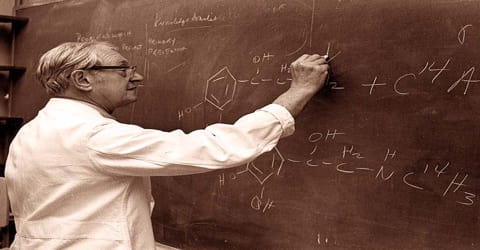
After receiving the Nobel Prize in 1970, Axelrod used his visibility to advocate several science policy issues. In 1973 U.S. President Richard Nixon created an agency with the specific goal of curing cancer. Axelrod, along with fellow Nobel-laureates Marshall W. Nirenberg and Christian Anfinsen, organized a petition by scientists opposed to the new agency, on the grounds that by focusing solely on cancer, public funding would not be available for research into other, more solvable, medical problems. Axelrod also lent his name to several protests against the imprisonment of scientists in the Soviet Union. Dr. Axelrod was a member of the Board of Sponsors of the Federation of American Scientists and the International Academy of Science.
Axelrod also served as a Member of the editorial boards and committees of a number of journals including ‘Journal of Pharmacology and Experimental Therapeutics’, ‘Journal of Neurochemistry’, and ‘International Journal of Psychobiology’.
Awards and Honor
Julius Axelrod was awarded the Gairdner Foundation International Award in 1967.
Axelrod along with Sir Bernard Katz and Ulf von Euler was jointly awarded the Nobel Prize in Physiology or Medicine 1970 “for their discoveries concerning the humoral transmittors in the nerve terminals and the mechanism for their storage, release, and inactivation”.
Death and Legacy
Julius Axelrod suffered from heart trouble in his later years, and died in his sleep at the age of 92 on December 29, 2004, at his home in Rockville, Maryland. At his death, he was survived by two sons, Paul and Alfred, and three grandchildren.
Julius Axelrod was known for his research on Catecholamine metabolism. He also discovered and characterized the enzyme catechol-O-methyl transferase, which is involved in the breakdown of catecholamines.
Respected by his colleagues and popular with his graduate assistants, Axelrod was known for his modesty. He learned of his Nobel Prize win from his dentist, after forgetting to listen to the radio that morning, and when President Richard M. Nixon made a congratulatory telephone call, Axelrod used the opportunity to challenge the Nixon Administration’s planned budgetary revisions in scientific funding, which had caused some consternation at the NIH. The Nobel prizewinner later said that his achievements would have been impossible for the generation of scientists who followed him, when earning a doctorate at the age of 41 would put one far behind in the professional race. “There’s no room in the field of research for people like me,” he asserted, according to Jon Thurber’s Los Angeles Times obituary, quoting an earlier interview, “who matured slowly.”
Information Source:

